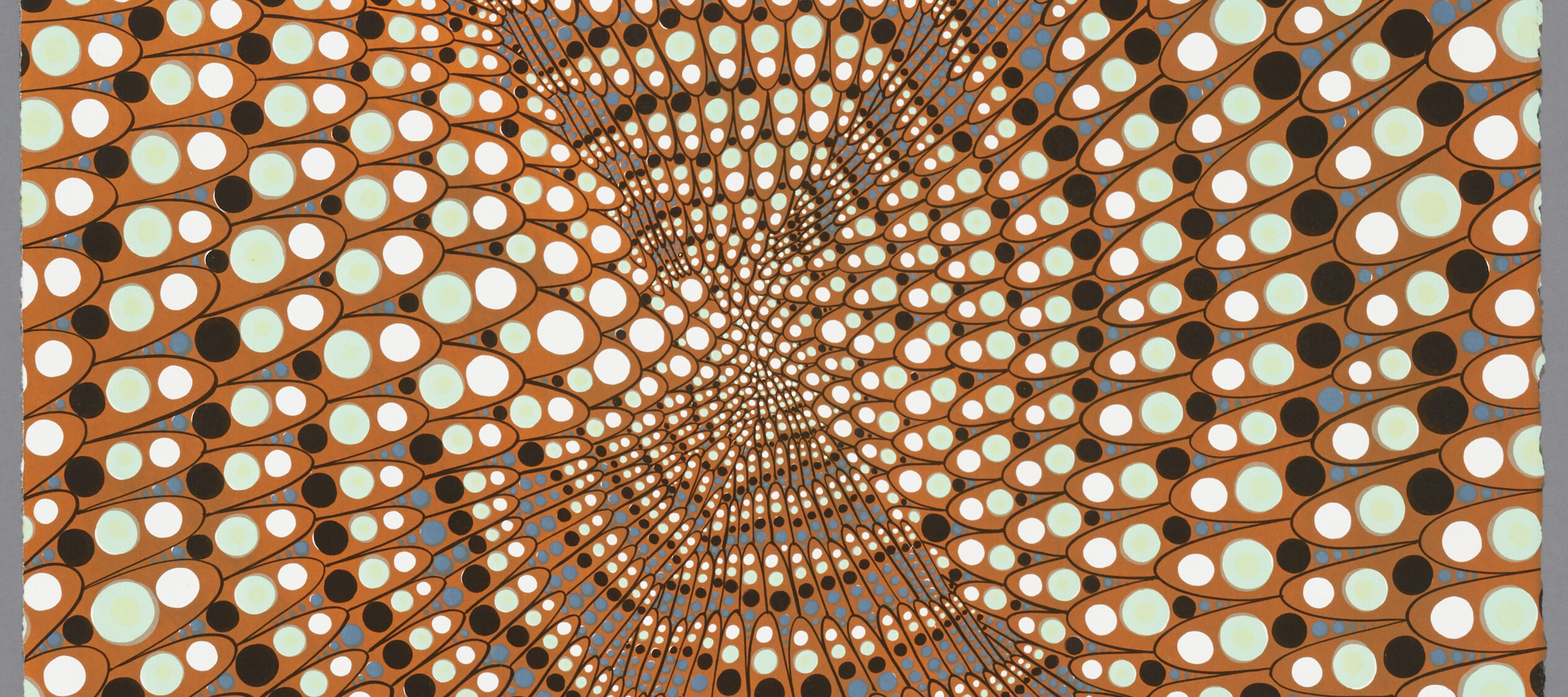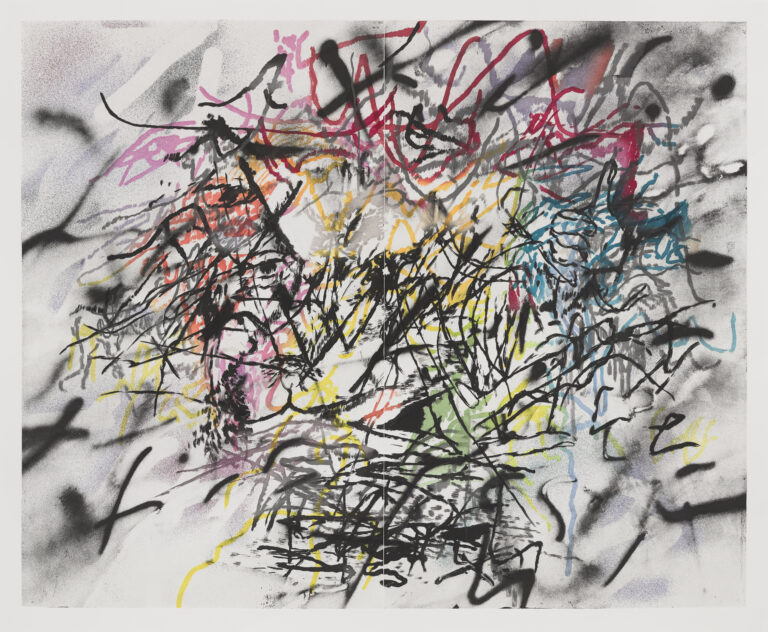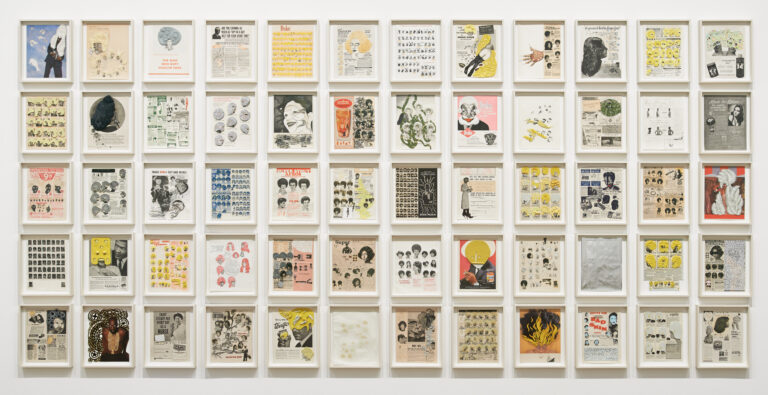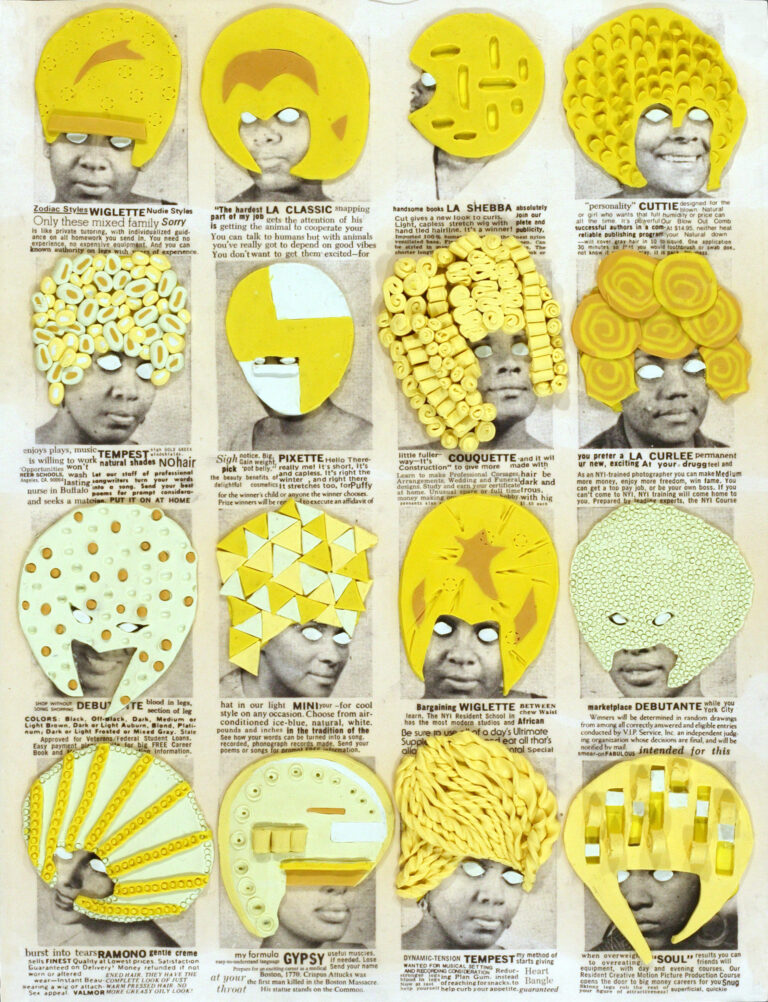On view at the American University Museum at the Katzen Arts Center from January 29 through May 22, 2022, Positive Fragmentation: From the Collections of Jordan D. Schnitzer and His Family Foundation includes more than 100 works by 21 contemporary artists who use fragmentation both stylistically and conceptually. Through their prints, artists including Betye Saar, Wendy Red Star, Lorna Simpson, Jenny Holzer, Louise Bourgeois, Julie Mehretu, Swoon, Mickalene Thomas, and Sarah Morris question the status quo and suggest new perspectives.
Time
Artists in Positive Fragmentation use the act of deconstruction to explore concepts of time. The incommunicability of the universe, of time, and of the liminal space between life and death is a challenge that has tested religions, philosophers, and artists for centuries. Any attempt at the expression of these concepts is necessarily fragmented, seen through a glass darkly. The wide gestural marks of Julie Mehretu (b. 1970) are suited to contemplating philosophical propositions. Titled after the six levels of transitional states between life and death in Tibetan Buddhism, Mehretu’s Six Bardos (2018), two of which are in this exhibition, use a combination of markings and lines that suggest at once ancient writing and contemporary graffiti. The familiarity of her forms gives viewers an entry point into Mehretu’s works while their indecipherability prevents a singular interpretation.
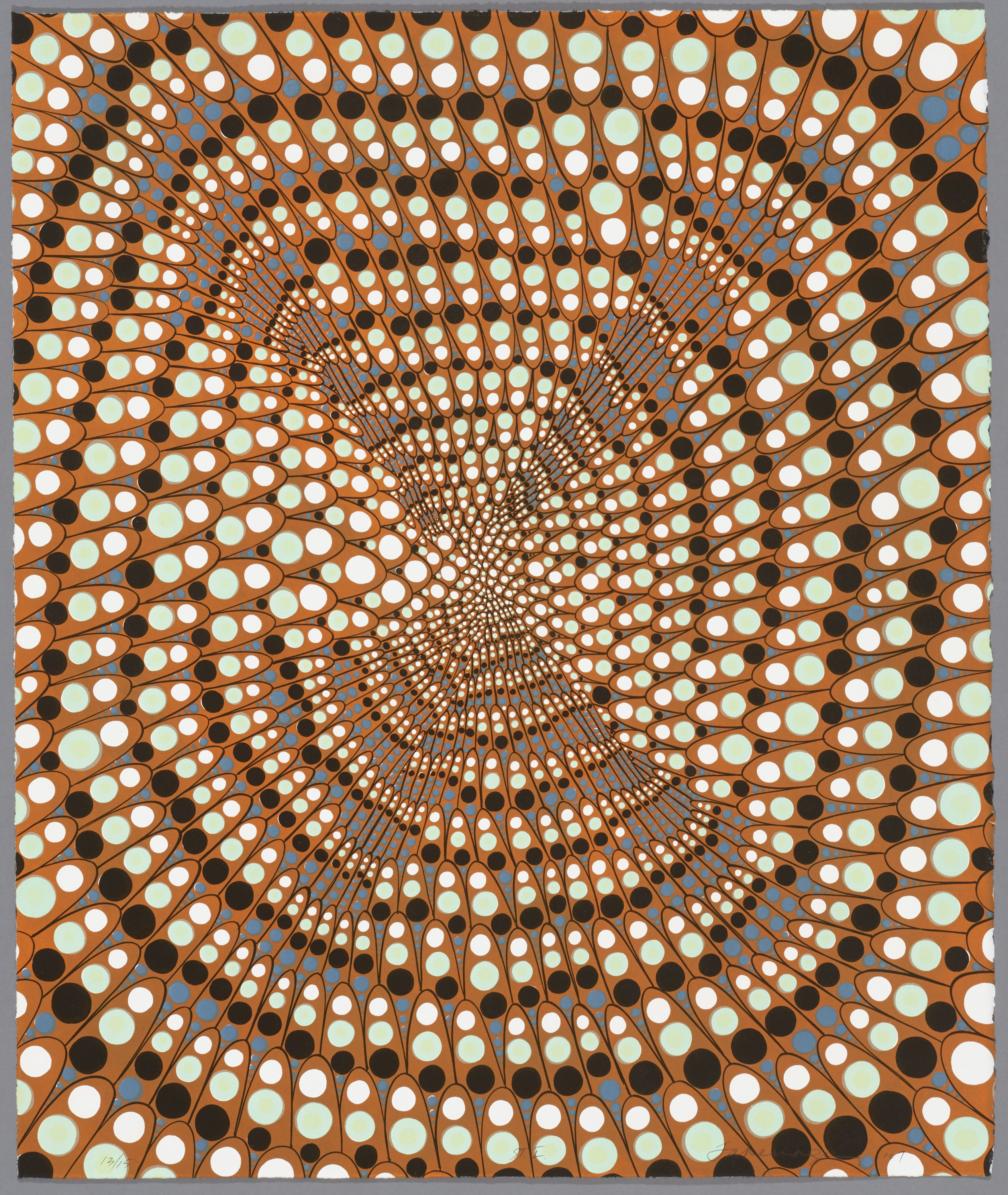
Barbara Takenaga (b. 1949) finds inspiration in the art of the past. In Angel (Little Egypt) (2007), Takenaga takes her visual cue from an angel’s wing painted by the Italian Renaissance artist Fra Angelico. Her repetitive motifs evoke the macrocosm of the infinite universe as well as the microcosm of molecular life. Of this plurality, Takenaga says, “I liked the way the feather pattern [of the angel’s wing] is similar to the Asian motif of fish scales or waves of water. There is a reference to the natural world, as well as the heavenly, but in an abstract, decorative approach.”
Text
Artists’ use of legible text in their work can take many different forms. In DeLuxe (2004–5), Ellen Gallagher (b. 1965) takes text from vintage African American periodicals and collages it with imagery from the same publications, the result complicates rather than explicates. Mainly taken from advertisements, these words and images have been reassembled by Gallagher (who has also added handmade embellishments) into a barrage of hollow promises and dubious advice. In retrospect, the work seems like an uncanny harbinger of today’s social media newsfeeds.
For the artists featured in Positive Fragmentation, creation begins with deconstruction as they dissect shape, color, perspective, text, idea, and stereotype. For some, meaning resides in the act of pulling apart and fragmenting images and ideas, exposing what lies beneath. Others assemble fragments to create a new whole defined by its different parts. Exploring the impulses that drive the creative approaches in the work of these artists through the lens of “positive fragmentation” can provide new ways of making sense of our own fractured post-pandemic world and provide inspiration for how to navigate into the future.
Check out Positive Fragmentation at the American University Museum, Friday–Sunday, 11 a.m.–4 p.m. Free. No reservations required. Please visit their website for current visitor information.
